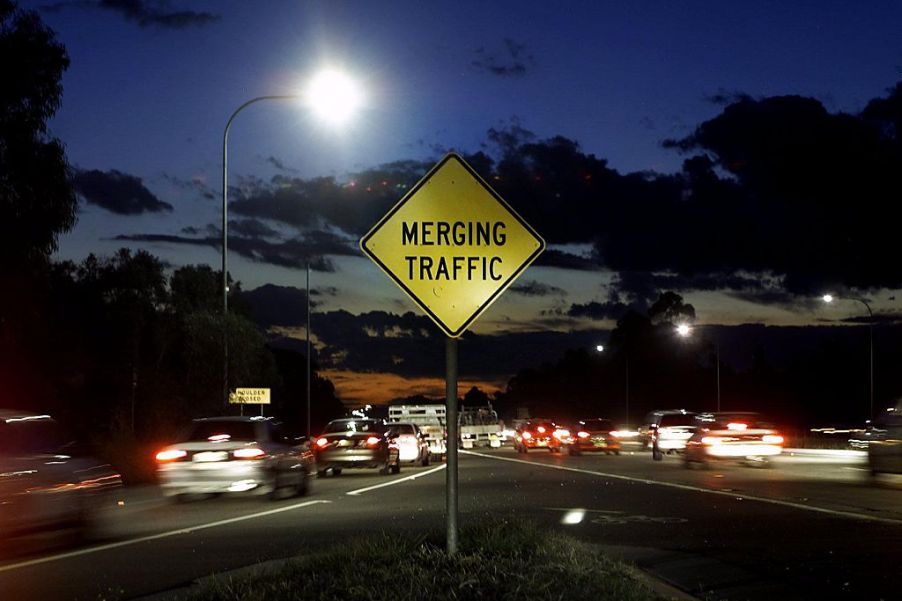
Do the “Zipper Merge” When Traffic Backs Up: What Is It?
There is a craft to driving in heavy traffic. Not that it is recognized, or that it even matters. There are rules of the road, and then there is the craft of driving. You can sometimes get away more often with speeding on highways doing things a certain way. But far be it for MotorBiscuit to go there.
But there are other tips we can delve into like the “zipper merge.” It will speed up backed traffic and get you home sooner. You might know what it is but never heard it referred to like that. Zipper merge. Let’s take a look.
The zipper merge can speed things up safely

What the zipper merge does is optimize open and closed lanes when traffic comes to a merge point. Like going from two lanes to one lane. Sometimes roads do this by design (or lack thereof). Other times it is because of a stalled car, or a lane closed down for repairs. And sometimes it is from a beach chair, refrigerator, or some such thing that has fallen out of a truck.
The point being a lane gets shut down and those stuck in that lane have to merge into the adjacent lane. When you come upon this here’s how it is supposed to work. It will help bottleneck traffic move along.
If you’re in the lane that is merging, stay in the lane. Don’t get over too quickly. Stay there until you get to the merge point. At this point, the car next to you should allow one car to move ahead of them from the closed lane.
The zipper merge is like a choreographed weaving of two lanes into one

It should be like a choreographed weaving of two lanes merging into one. So you move into the open lane ahead of the car next to you. Then the car behind you follows behind you. And the car behind them allows the car that was behind you in the closed lane into the open lane. And so it goes.
It is like zipper teeth when they latch together. One, two; one, two. That is how it is supposed to work. Now, some of this choreographed dance relies on cooperation. If the car next to you won’t let you in because they think they own that lane or can’t afford to allow you in, then your lane comes to a stop.
“Motorists blocking open lanes creates a dangerous situation”

Allowing you in at the merge point keeps your lane moving at much the same rate as the lane that is open. A Michigan Department of Transportation spokesperson told Autoblog, “The motorists that block the open lane are only creating a dangerous situation and invoking road rage. They are accomplishing nothing more than that.”
AAA manager of driver training Dr. Bill Van Tassel told Autoblog, “Using the zipper merge through temporary work zones, research suggests, improves traffic flow by up to 15 percent. That’s a nice little bonus.” It also shortens the backup length by 40-75 percent.
It can improve safety too

Using the zipper merge in a calm and methodical way improves safety, too. “The mere fact that you have to allow space for cars that need to move in front of you if you’re in that lane — or that you have to arrange for space to be there if you’re the car moving into that lane — that sort of gets everybody focused on space,” Van Tassel says.
So there are numerous rewards for correctly merging in traffic when a lane closes. And there are no rewards for not letting the car next to you into the open lane at the merge point. Try it next time and see for yourself.



